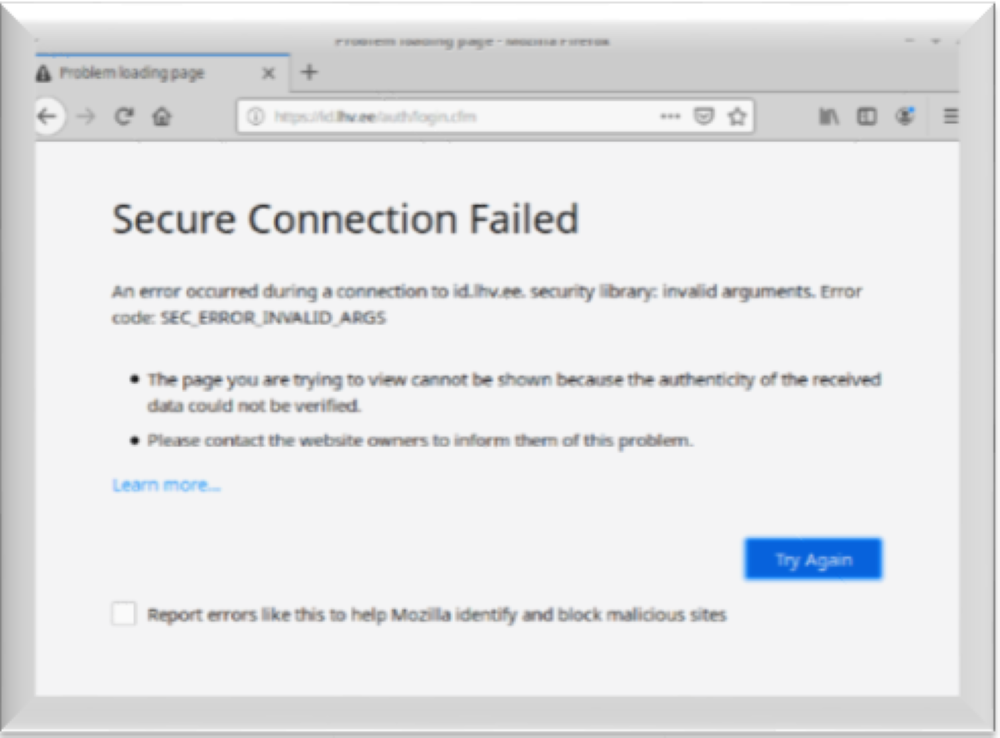HOW TO FIX “SECURE CONNECTION ERROR” IN YOUR BROWSER
Learn how to fix secure connection errors in your browser with our step-by-step guide. Resolve HTTPS, SSL, and TLS issues to ensure safe and secure browsing.

INTRODUCTION:
When browsing the internet, are you seeing the annoying "Secure Connection Failed" error message? This error usually appears when the website you are trying to access cannot be securely connected to by your browser. In this easy troubleshooting guide, you will be guided on how to resolve the problem and resume your seamless browsing.
Understanding the “Secure Connection Failed” Error
Your browser tries to establish a secure connection using HTTPS when you visit a specific page: HTTPS aids in data encryption between the browser and the website’s server. The browser will display the message "Secure Connection Failed" if there are issues with the SSL/TLS certificate, a mismatch between security protocols, or network settings.
Why does this error occur?
Consider yourself the customer of your business and consider a website as a store. Retailers hire bouncers, whose main responsibility is to verify your identity to ensure a safe shopping experience. Similarly, websites utilize unique functionalities called Secure Sockets Layer (SSL) certificates to safeguard your interaction with the website. Your data, including passwords and payment card details, is shielded from prying eyes by this encryption.
A "secure connection failed" error in your browser indicates that either the website's SSL certificates cannot be authenticated by the browser, or the browser is unable to establish a secure connection. These are a few typical causes:
• Inaccurate Time and Date: Maliciously, your computer might be configured to display the incorrect time. Browsers constantly rely on precise time settings for SSL certificate validation.
• Outdated Browser: This can occur from the fact that the browser being used is quite outdated and may not be able to keep up with the security systems needed to handle contemporary certificates.
• Certificate Issues: The SSL certificate may have expired or been obtained from an illegitimate or unreliable source, among other reasons.
• Conflicting Security Software: Software that is too cautious, such as firewalls or antivirus programs, may disrupt the secure connection.
• Browser Cache and Cookies: When your browser has corrupted data, it might impact how quickly webpages load in your browser.
. Connection issues: Other times, access to secure websites may be hampered by a weak or inconsistent connection.
Resolving the Error "Secure Connection Failed":
Please be advised that depending on your browser, the instructions may vary significantly. These are just broad recommendations; if further information is needed, you can visit the browser support page, depending on your browser.
Initial Solution: Verify Your Internet Connection
The warning "Secure Connection Failed" occasionally appears when there is a problem with the internet connection. Here is a way to clear up the issue:
-
Verifying that the device is connected to the internet is crucial.
-
Restart your modem or router or attempt connecting to a different network.
-
Turn off any proxy or VPN software that might be interfering with the connection.
2nd Solution: Clear Cookies and Cache from Your Browser
Cookies and cached data can occasionally become corrupted and cause issues, despite helping speed up website loading times. Here's how you get rid of them:
• Chrome:
Click the three dots in the upper right corner to access "Settings," then go to "Privacy and Security,".
Choose a time range under “Clear browsing data”.
Make certain you check the boxes for "Cookies and other site data" and "Cached images and files". Select “Clear data” to clean the cache.
• Firefox:
Click the three horizontal lines in the top right corner of the browser, select History, and then select “Clear Recent History”.
Choose a window of time, and always ensure that “cookies” and cached web content” are checked.
Press "OK”.
• Safari:
On the Mac, Launch Safari, and go to “Safari” > “preference”.
Select the “privacy” tab and Select “Manage Website Data”.
Delete specific website data or select “Remove All Website Data” to get rid of all Website Data.
Go to “Settings” > “Safari” on your iPhone or iPad, then select “Clear History and Website Data”.
• Edge:
Click the three dots in the top right corner, then navigate to “ settings”, then “privacy, search, and services”.
Choose a time range under “clear browsing data” and verify that the “cookies and other data are selected.
3rd Solution: Verify the Time and Date Settings
There may be an impact on the device's proper time settings, which will result in SSL certificate validation issues. Take the following actions to make sure your date and time settings are correct:
• Windows:
Locate the clock on the Windows taskbar and right-click on it to select "Adjust date/time settings."
Make sure that the date and time zone are accurate.
Enabling "Set time automatically" with a single mouse click can be useful the next time.
• Mac:
In the upper left corner, click the Apple icon, and select "System Preferences." Navigate to "Date & Time" and confirm the parameters.
If at all possible, turn on "Set date and time automatically".
4th Solution: Temporarily disable your firewall or antivirus program
Overzealous firewall or antivirus software occasionally tampers with secure connections. For a while, deactivate them, then try interacting with the platform to see if the error still occurs. Remember to activate them once you've identified and resolved the issue.
5th Solution: Consider Using Incognito Mode to Visit the Website
Consider using the incognito or private browsing mode if the problem only appears while you are using your regular browser session. This mode can help you determine whether any of the aforementioned could be causing the problem by disabling browser extensions and custom settings.
6th Solution: Look for updates for your browser
Certain outdated browsers may have security flaws or bugs that might lead to an improper connection or information leakage. Make sure your web browser is up to date and download any available updates. This guarantees that your browser is up to date with all security patches and updates for dependability and security.
• Chrome:
To access the “settings” and “about chrome” sections, click the three dots in the top right corner of the screen.
If an update is available, it will download and install itself.
• Firefox:
Locate and click the three horizontal lines at the top right corner of the browser window to navigate to "Help" and then scroll down to "About Firefox." After that, Firefox will download any updates it finds.
• Safari:
Open the Safari browser for your Mac. Choose it from the menu, after which select “preferences”.
There will be an update available for installation under the update tab.
• Edge:
In the upper right corner, click the three dots. Select "Settings," then "About Microsoft Edge." Updates will be automatically checked for and installed by the browser.
CONCLUSION
You can easily fix the "Secure Connection Failed" issue in your browser by using the troubleshooting steps provided. These errors are commonly caused by issues related to network connections, browser settings, or site security certifications. It is advisable to contact your website administrator for more support if none of the previously suggested solutions work or to visit the website using a different device or network.
Thanks for reading.
If you like the article, consider sharing and subscribing. ;)




